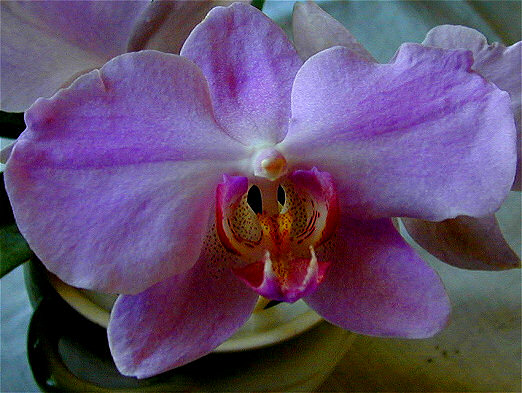|

|
|
Phalaenopsis is one of today's most easy to care for orchids. The genus contains about 60 species that are the parents of the hundreds if not thousands of hybrids we have today. The majority are crosses with the species Phalaenopsis sanderana from the Philippines. The Latin name phalaina, moth, and opsis, similar to, refers to the flowers likeness to a moth in flight, hence the common name moth orchid. The flowers are commonly white or pink. We sometimes find other Phalaenopsis species available at garden centers and these have similar care requirements. | |
Phalaenopsis care
 |
Temperature Regular room temperature or somewhat cooler suits this orchid just fine. However, it's sensitive to chills so must be always be kept in frost free conditions. Watering Often we are told to keep moth orchids on the dry side but that is something I don't agree with. My plants are allowed to keep a little water in the planter at all times and thrive on it. Phalaenopsis now and then likes to get their roots rinsed. Move your plant to the kitchen sink or shower and pour on generous amounts of water, enough so it flows freely through the bottom holes. Keep pouring water in the pot until the runoff is perfectly clear and any brown staining has disappeared. |
|
Humidity |  My phalaenopsis surprised me with new flowers. Unless the flower stem is staked up it will grow horizontally and the flowers become barely visible above the edge of the pot. |
SWEDISH VERSION * * * * * HOME